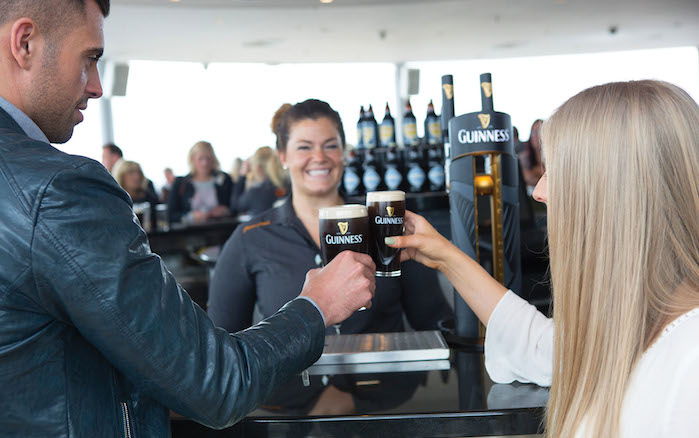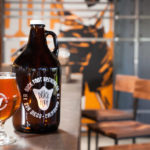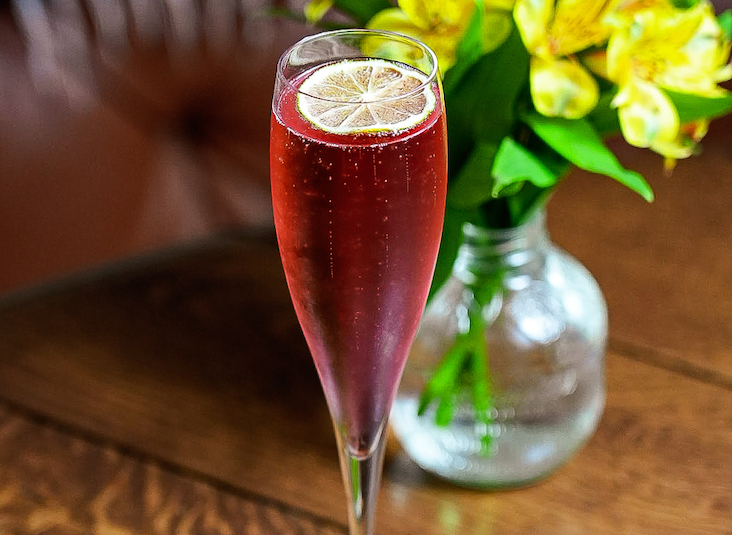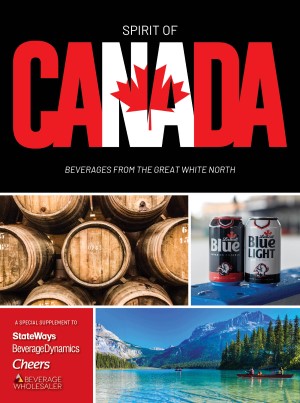From distilled spring water to Kombucha to craft beer to organic wine, there’s a drink on the market to suit every taste. As a result, consumers face more brand choices and are savvier than ever about their buying decisions. In response, some of the world’s most iconic beverage companies — like Heineken, Bacardi and Guinness — are increasingly looking for creative and enduring ways to engage with their fans.
One way these iconic brands are deepening customer loyalty and engagement is by transforming their traditional tasting rooms and facilities tours into evocative brand home destinations — none more so than the Guinness Storehouse, located at St. James’s Gate Brewery in Dublin, Ireland.
Brand homes are especially successful in the beer and spirits industry – and among adults who consume alcohol, 42 percent cite beer as their beverage of choice. On top of that, well-done brand homes are quintessentially communal, allowing brands to build emotional connections with their audiences, engage fans in experiences that touch all five senses, and create powerful memories that build loyalty and inspire word-of-mouth promotion.
Compared to fleeting social media interactions and expensive 30-second television spots, brand homes engage customers for several hours. There are three important elements the most successful brand homes have in common.
A meaningful location. A brand home’s location significantly impacts its success. Ideally, the location is authentic and has a historical significance or connection to the brand.
The best brand homes are also located near an existing tourist destination that widely attracts visitors and locals alike. Consider the Guinness Storehouse, which in 2015 was named the top tourist attraction in Europe. The Guinness Storehouse boasted record-breaking 2015 attendance numbers, welcoming 1.5 million guests, a whopping 18 percent increase over 2014. Beyond that, since its 2011 update, food and beverage spend increased 47 percent, and overall net profit increased 240 percent. Most importantly, more than 80 percent of visitors express a greater affinity for Guinness after the tour.
An evocative story. Consumers today are increasingly curious about where their products come from and how they are made. Successful brand homes are more than guided tours or dusty gift shops – they are artfully designed journeys filled with meaningful touchpoints that connect authentically with visitors.
The best brand experiences tap into the universal emotions and shared moments that touch each guest. For example, the Guinness Storehouse covers seven floors surrounding a glass atrium shaped like a pint of the famous brew.
The tour begins by introducing the beer’s four ingredients (water, barley, hops and yeast), and the story of its founder, Arthur Guinness. Floor by floor, visitors take a walk through Guinness’ history, featuring historical items, advertising elements and interactive exhibits, allowing visitors to completely immerse themselves in the past, present and future of the world’s greatest beer. The tour culminates in a shared celebratory swill in the top-level “Gravity Bar,” overlooking a magnificent, sweeping view of Ireland’s green hills. It is nothing short of euphoric.
An intriguing process. Along with a healthy curiosity about what is in their favorite food and beverages, consumers today are interested in knowing how something is made – where the ingredients are sourced, and how they are produced and packaged for consumption. The desire to gain the “logic of mastery” speaks to customer interest in having a deeper understanding of and connection to the brands they love.
At Guinness, there are two special experiences not to be missed. First, the Open Gate Brewery gives visitors a chance to taste new beers (including samples that may never make it to the public), meet the master craftsmen behind the new concoctions and immerse themselves in the storied walls of the experimental brewery. Another is the one-in-a-million Connoisseur Experience, where guests can book a luxurious private bar for an unforgettable tasting experience, led by an expert who walks them through the history and craftsmanship of Guinness.
The latest trends in brand homes increasingly meet consumer desires for information. Premium craft tours, opportunities for customers to create their own brew, and exclusive clubs and tasting events all help create one-of-a-kind experiences that extend beyond the initial visit and offer a powerful way to cement the emotional connection between fan and brand. BD
Christian Lachel is the Executive Creative Director and Vice President of BRC Imagination Arts. For more information, visit www.brcweb.com.






